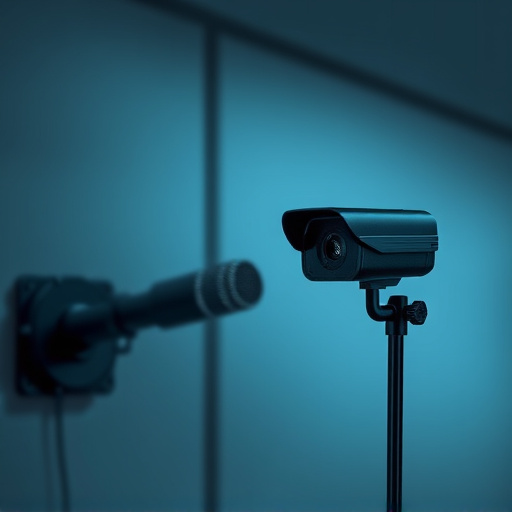Hidden sound recorders, also known as spy cameras and microphones, are advanced technological devices designed for covert audio and video capture. Their tiny size allows them to blend into everyday objects, ensuring discreteness. While offering enhanced privacy and security, their potential for misuse raises ethical and legal concerns. These gadgets have superior audio recording capabilities and low power consumption, enabling them to operate undetected for extended periods. They are valuable tools for surveillance, security, and investigations, featuring advanced features like night vision and motion detection. However, their secretive nature can facilitate malicious activities and necessitate a delicate balance between enhanced security and privacy rights. The future of these devices includes advanced technology, miniaturization, and AI integration, further enhancing their capabilities.
Hidden sound recorders, a blend of sophisticated technology, combine the capabilities of spy cameras and microphones. These discreet devices offer unparalleled covert recording solutions for various applications, from security and surveillance to personal investigations. Understanding how they work and their growing prevalence is essential, as they raise legal and ethical considerations. This article explores the intricate world of hidden sound recorders, their functionality, common uses, potential pitfalls, and glimpses into the future of this evolving technology.
Understanding Hidden Sound Recorders: A Discreet Technology
Hidden sound recorders, also known as spy cameras and microphones, are sophisticated pieces of technology designed to capture audio covertly. These devices can be small enough to fit discreetly in everyday objects like pens, watches, or even buttons, making them virtually invisible to the naked eye. Their primary function is to record conversations or sounds without the knowledge or consent of those involved, offering a level of privacy and secrecy that raises both ethical and legal questions.
The technology behind these devices involves advanced audio recording capabilities combined with minimal power consumption, allowing them to operate for extended periods undetected. They can capture high-quality sound, sometimes even through walls or other barriers, making them valuable tools for surveillance, security, and investigation purposes. However, their use is often controversial, as they can invade personal privacy and be employed in illegal activities if misused.
Components and Functionality: Spy Cameras and Microphones Combined
In the realm of covert surveillance, devices that combine the functionalities of a spy camera and microphone offer unparalleled discretion and versatility. These innovative gadgets are meticulously designed to capture both visual and auditory information without drawing attention, making them ideal for various purposes ranging from home security to professional investigations.
The integration of a high-resolution spy camera and a sensitive microphone allows for the simultaneous recording of video and audio, ensuring that every detail is captured accurately. Advanced features such as night vision capabilities, motion detection, and remote access enhance their effectiveness, enabling users to monitor environments discreetly from anywhere at any time. This fusion of technology not only provides peace of mind but also serves as a powerful tool for maintaining privacy and security in today’s digital era.
Applications: Where and Why They Are Used
Hidden sound recorders, often equipped with advanced spy cameras and microphones, find their applications across a range of sectors. These devices are particularly useful in scenarios where discreet observation and audio capture are required. For instance, in law enforcement, they can aid in gathering evidence during surveillance operations, ensuring officers have accurate recordings without revealing their presence.
Similarly, in the private investigation industry, these recorders are invaluable tools for uncovering hidden truths. They can be used to monitor suspicious activities, confirm infidelities, or gather intelligence in corporate espionage cases. The portability and covert nature of these devices make them a preferred choice for professionals needing to record audio without drawing attention, ensuring every conversation is captured intact.
Legal Considerations and Ethical Dilemmas
The use of hidden sound recorders, often disguised as everyday items like pens or buttons, raises a series of legal considerations and ethical dilemmas. In many jurisdictions, the placement and use of such devices are governed by laws pertaining to privacy and surveillance. Even in places where recording is legal, there are strict rules about consent – both the person being recorded and any individuals captured on camera must be made aware that they’re being monitored. Failure to obtain this consent can lead to serious legal repercussions.
Additionally, the ethical implications extend beyond legality. The secretive nature of spy cameras and microphones can erode trust in relationships, whether personal or professional. They may be used for malicious purposes like stalking, harassment, or industrial espionage, further complicating their ethical standing. As technology continues to advance, it’s crucial to strike a balance between the benefits of enhanced security and the preservation of privacy rights and ethical conduct.
Uncovering the Future of Covert Recording Devices
The future of covert recording devices, such as hidden sound recorders and spy cameras, is looking more advanced than ever before. With technological advancements, these gadgets are becoming increasingly sophisticated and harder to detect. Miniaturization plays a significant role in this evolution; tiny yet powerful microphones and cameras now fit into spaces that were once unimaginable. This allows for discreet placement in various environments, from offices to homes, offering users the ability to capture evidence or monitor activities without raising suspicion.
The integration of artificial intelligence (AI) is another game-changer. AI algorithms can enhance audio quality, improve low-light conditions, and even enable devices to learn and adapt to their surroundings, making them more effective and versatile. Additionally, cloud connectivity ensures that users can access recorded data remotely, fostering convenience and real-time monitoring capabilities. As technology continues to march forward, we can expect even more innovative features, pushing the boundaries of what these hidden recording tools are capable of.
